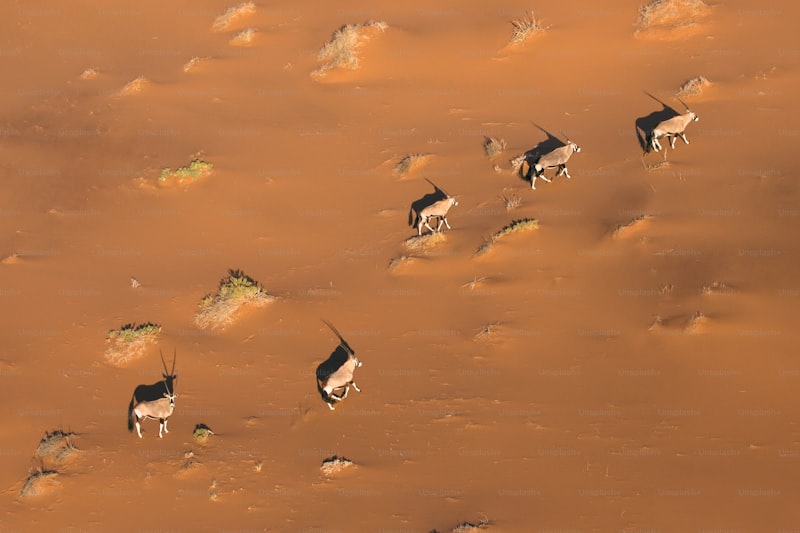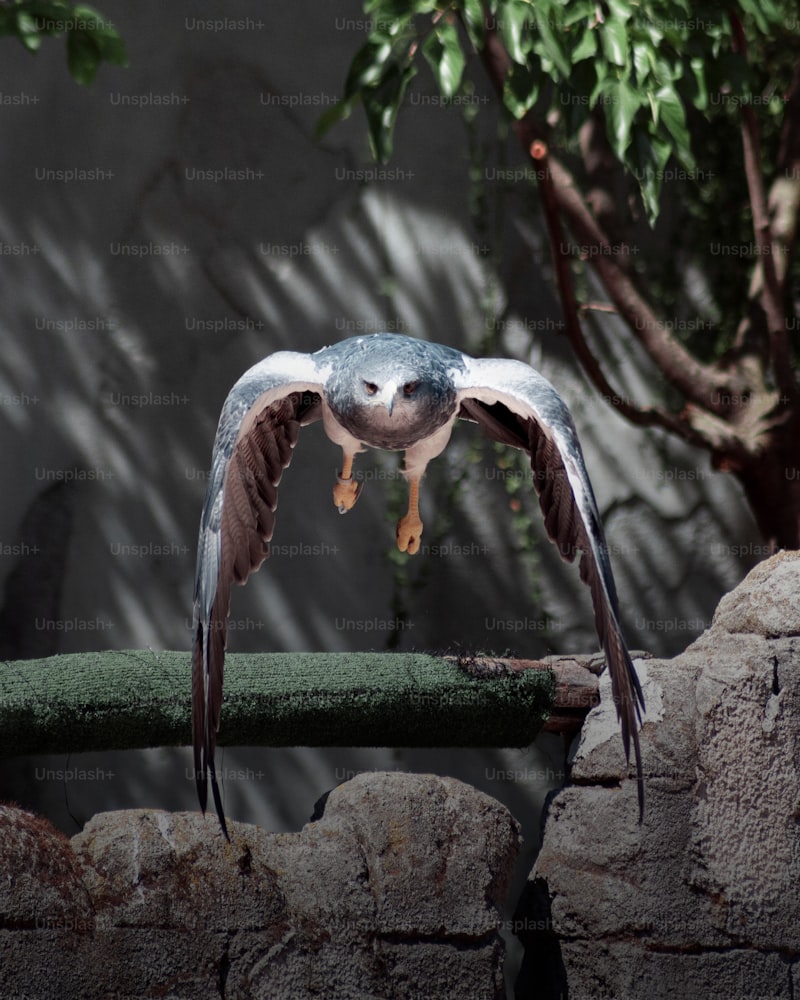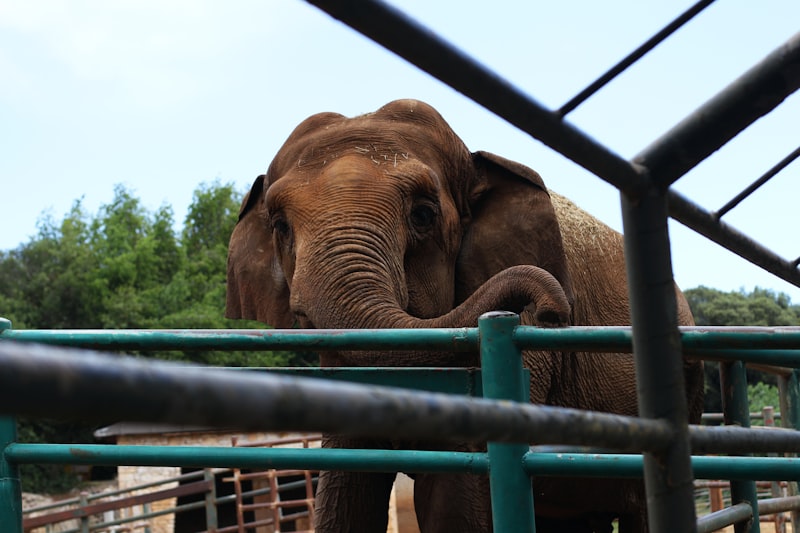As you venture further, you encounter marine iguanas, creatures that have adapted to a life of swimming and sunbathing on the rocky shores. Their dark, rugged bodies blend seamlessly with the volcanic rock, a stark contrast to the crystal-clear waters they dive into for their underwater meals. These iguanas are a testament to evolution’s creativity in shaping life to fit the harshest environments.
Above the waves, blue-footed boobies perform their intricate mating dance, their bright blue feet contrasting against the barren landscape. These birds are not just a spectacle but also a vital part of the island’s ecosystem, contributing to the delicate balance that sustains life here.
Meanwhile, Galapagos penguins dart through the waters, the only penguin species to live so close to the equator. Their sleek bodies slice through the ocean currents, a reminder of the diverse adaptations that thrive in this unique archipelago.
In the skies above, waved albatrosses glide effortlessly, their wings spanning wide as they navigate the relentless winds. These majestic birds travel thousands of miles to return to the Galapagos, a testament to the islands’ enduring allure and ecological significance.
Beyond Darwin: Exploring the Evolutionary Marvels of Galapagos Wildlife
Have you ever wondered about the extraordinary wildlife of the Galapagos Islands? Beyond Darwin’s renowned theory of evolution, these islands hold a treasure trove of natural marvels that continue to captivate scientists and travelers alike.
Nestled in the Pacific Ocean, the Galapagos archipelago is home to some of the most unique species on the planet. From the iconic giant tortoises to the blue-footed boobies, each animal has adapted uniquely to its environment over millions of years. These adaptations offer a glimpse into the intricate workings of evolutionary biology.
Take, for instance, the marine iguanas. These remarkable creatures are the only lizards on Earth that swim in the ocean. Their ability to dive deep into the sea to forage for algae showcases a stunning adaptation to the islands’ volcanic terrain and sparse vegetation.
The Galapagos finches, famously studied by Darwin himself, provide another compelling example. Each island boasts its own distinct species of finch, with varying beak shapes tailored to different diets. This diversity illustrates how isolated environments foster unique evolutionary paths.
Moreover, the islands’ isolation played a pivotal role in shaping their biodiversity. Over millennia, species arriving from mainland South America adapted to new niches and environmental conditions. This process, known as adaptive radiation, resulted in the emergence of species found nowhere else on Earth.
Today, visiting the Galapagos offers a firsthand encounter with evolution in action. Observing these creatures in their natural habitat sparks wonder and curiosity about the forces that drive biological diversity.
The Galapagos Islands stand as a living testament to the power of evolution and the wonders of natural selection. Their wildlife continues to inspire awe and scientific inquiry, making them a must-visit destination for anyone fascinated by the complexities of life on Earth.
Galapagos Archipelago: A Sanctuary for Evolution’s Pioneers

Imagine stepping onto these remote islands, where every step unveils a new chapter in the story of life. From the towering peaks of volcanic cones to the crystal-clear waters teeming with marine life, the Galapagos offer a glimpse into a world untouched by time.

One of the archipelago’s most striking features is its diverse wildlife. Here, giant tortoises roam freely, embodying resilience and longevity. These gentle giants, some reaching over a century in age, symbolize the harmony between species and their environment.
The Galapagos Islands are also home to an array of marine species, from playful sea lions to graceful sea turtles. Snorkeling in these waters feels like diving into a vibrant underwater city, where each creature plays a vital role in the ecosystem’s delicate balance.
Charles Darwin’s visit to the Galapagos in the 19th century forever changed our understanding of biology and evolution. His observations of finches and tortoises on different islands led to his groundbreaking theory of natural selection, a cornerstone of modern biology.
Today, the Galapagos remain a living laboratory for scientists and nature enthusiasts alike. Every year, visitors flock to these islands to witness firsthand the ongoing evolutionary processes that shaped life on Earth.
The Galapagos Archipelago stands as more than just a natural wonder—it is a living testament to the power of evolution and the importance of conservation. Its beauty and biodiversity continue to inspire and educate, reminding us of our responsibility to protect and preserve our planet’s natural treasures.
Galapagos Wildlife Wonders: From Giant Tortoises to Blue-Footed Boobies
The Galapagos Islands are renowned for their stunning wildlife diversity, from the iconic Giant Tortoises to the vibrant Blue-Footed Boobies. These islands, located in the Pacific Ocean, are a haven for nature enthusiasts and scientists alike, offering a glimpse into evolutionary marvels.
At the heart of Galapagos wildlife are the Giant Tortoises, often symbolizing longevity and resilience. These majestic creatures can weigh up to 500 pounds and live for over a century. Their slow and steady pace reflects the serene life on these islands, where time seems to move at its own rhythm.
Equally captivating are the Blue-Footed Boobies, known for their comical yet graceful dance rituals. Their striking blue feet are a marvel of nature, serving both as a visual spectacle and a practical purpose in attracting mates. These seabirds dive into the ocean with precision, showcasing their hunting prowess with every plunge.
The islands’ biodiversity extends beyond these famous residents. Marine iguanas, uniquely adapted to swimming and feeding on algae underwater, are another wonder. They blend into the volcanic rocks, showcasing nature’s ability to adapt and thrive in extreme environments.
Visitors to the Galapagos Islands often find themselves in awe of the fearless wildlife that roams freely. Sea lions bask on sandy shores, unperturbed by human presence, while Galapagos penguins dart through the clear waters with agility.
Exploring the Galapagos wildlife is not just an adventure; it’s a journey through time and evolution. Each species tells a story of adaptation and survival in a world shaped by volcanic eruptions and ocean currents.
Whether you’re a biologist studying endemic species or a traveler seeking natural marvels, the Galapagos Islands offer an unforgettable experience. Every encounter with a Galapagos wildlife wonder leaves a lasting impression, reminding us of the delicate balance of nature and the need for conservation efforts to preserve these treasures for future generations.
Unveiling Galapagos’ Hidden Treasures: Extraordinary Wildlife Up Close

The Galapagos are renowned for their unique biodiversity, a living laboratory of evolution that inspired Charles Darwin’s theory. Here, visitors can witness species found nowhere else on Earth, making every encounter a moment of scientific and natural awe.
Take, for instance, the Galapagos giant tortoise, an iconic symbol of longevity and resilience. These gentle giants roam freely across the islands, their massive shells echoing the ancient landscapes they inhabit. Seeing one up close is not just a sighting; it’s a glimpse into prehistoric times, where survival meant adaptation and endurance.
Another marvel is the marine iguana, a creature that defies expectations with its ability to swim in the ocean and feed on algae. Watching these reptiles dive gracefully into the crystal-clear waters, one realizes how evolution has sculpted life forms perfectly suited to their environment.
Bird enthusiasts are in for a treat as well, with the Galapagos offering sanctuary to countless avian species. The blue-footed booby, famous for its vibrant azure feet used in courtship dances, captivates visitors with its quirky behaviors and striking appearance. Meanwhile, the waved albatross, with its majestic wingspan, commands the skies above, a testament to the islands’ role as a haven for seabirds.
Even underwater, the Galapagos continue to enchant with their thriving marine life. Snorkelers and divers encounter playful sea lions, graceful sea turtles, and schools of colorful fish weaving through coral reefs. Every dive reveals a new chapter in the islands’ underwater saga, where currents bring nutrients that sustain this diverse ecosystem.
Frequently Asked Questions
How can tourists responsibly observe wildlife in the Galapagos Islands?
Learn how tourists can responsibly observe wildlife in the Galapagos Islands with these essential guidelines. Discover ways to minimize impact on local ecosystems while enjoying unique wildlife encounters.
What are some endangered species found in the Galapagos?
Discover some of the endangered species inhabiting the Galapagos Islands, including the Galapagos penguin, Galapagos giant tortoise, and the Galapagos sea lion. Learn about their unique adaptations and conservation efforts aimed at protecting these iconic species.
How did the wildlife of the Galapagos Islands inspire Charles Darwin’s theory of evolution?
Discover how the unique wildlife of the Galapagos Islands played a pivotal role in inspiring Charles Darwin’s theory of evolution. The diverse species observed, such as the Galapagos finches and giant tortoises, showcased adaptations that sparked Darwin’s ideas on natural selection and the origin of species.
Why are the Galapagos Islands famous for their biodiversity?
Learn why the Galapagos Islands are renowned for their biodiversity, exploring unique ecosystems shaped by isolation and diverse habitats that fostered the evolution of distinct species.
What unique animals can be found in the Galapagos Islands?
Explore the diverse wildlife of the Galapagos Islands, home to unique animals such as the Galapagos giant tortoise, marine iguana, and blue-footed booby. These species have evolved uniquely due to the islands’ isolation, offering a rare glimpse into natural adaptation and biodiversity.


